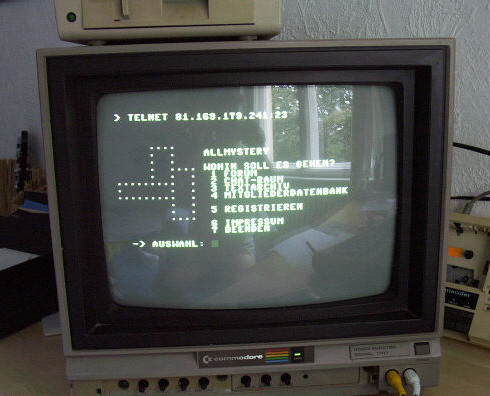
When the first two nodes of the ARPANET – in UCLA and the Stanford Research Institute – communicated with each other at 10.30pm on October 29, 1969, the connection heralded a new era in digital networking.
The first large scale network of its type, the ARPANET provided a model for the development of computer networks for a decade and functioned as an incubator for the development of protocols which allowed for the genesis of the World Wide Web. It also saw the development of a pattern of using networks for informal communication and recreation as well as collaboration, which remains a characteristic of digital networks to this day.
The ARPANET took its name from the organisation which funded its inception – ARPA, the Advanced Research Projects Agency (later renamed DARPA – the D was for Defense), a US government agency which sponsored the project through its Information Processing Techniques Office (IPTO).
Throughout the 1960s, IPTO funded numerous computer science projects in universities around the US, including early forays into computer networking by Larry Roberts, who would later become programme manager of the ARPANET.
However each of these projects, though funded under the same programme, operated independently with no physical means of communication between computer labs around the country, and network scientists saw the potential of connecting these to allow researchers to communicate and collaborate.
The independent nature of the diverse IPTO projects represented a significant hurdle for the development of a network, as each lab operated computers which were made by different manufacturers and used different operating systems and software. Thus, one of the first challenges in creating the network was the development of protocols which would allow the sharing of software and data across different platforms. It was this characteristic which distinguished the ARPANET as the first heterogenous computer network.
While researchers in America were putting together the infrastructure which would form the ARPANET, other network projects were simoultaneously under way across the Atlantic. In the UK, a team of scientists at the National Physics Laboratory were researching the possibility of creating a network which would allow the transfer of data by breaking it up into portions, or packets – a phenomenon termed packet switching – which would allow for the movement of large quantities of data across complex networks in discrete packets of some 1,000 bits.
Though the NPL would later go on to develop its own small packet network under Donald Davies – a physicist who had previously worked with Alan Turing of Bletchley Park fame to develop one of the world’s first electronic computers – a packet switching technology was also developed by Paul Baran of the California-based RAND (Research ANd Development) Corporation. While Baran’s technology underpinned the network protocol of the ARPANET, it was Davies who coined the term ‘packet switching’. Research and development firm BBN Technologies, meanwhile, was awarded the contract to build the network, consisting of modems connected by leased lines.
And so, with the network architecture in place, the ARPANET launched in 1969 with just two nodes at UCLA and Stanford Research Institute; these were quicky followed by nodes at the University of California, Santa Barbara, and the University of Utah. The network expanded rapidly, adding six new nodes in the six months after its launch and stretching across America to BBN Technologies’ headquarters in Massachussetts, and shortly afterwards to Harvard and MIT. RAND also acquired a node in the early months of the network. By 1975 there were 57 nodes on the network.

Over the next decade, the ARPANET grew to include universities and research facilities across America. The First International Conference on Computers and Communication in Washington DC in 1972, which saw the first public demonstration of the ARPANET, accelerated interest in this nascent technology.
Email soon followed, allowing researchers to send messages to each other across the network using the ‘user@host’ address convention which remains the standard. With the introduction of email came mailing lists, used for discussions ranging from research to science fiction. Inevitably, some researchers developed text-based games which were played across the network. In 1983 the earlier network protocol was replaced by TCP/IP, still in use today.
By the mid-1980s the ARPANET was no longer the only broad scale network operating in the US. Networks such as USENET and NSFNET were developed in the early eighties, and adopted the TCP/IP standard protocol which ultimately allowed these networks to communicate with each other and evolve into the modern internet. The ARPANET was phased out, with the last of its infrastructure decommissioned in 1990.
The ARPANET Completion Report, published by DARPA in 1978, found that “This ARPA program has created no less than a revolution in computer technology,” and that “the largest single surprise of the ARPANET program has been the incredible popularity of and success of network mail.” The report argued that the the network has facilitated a massive social change in the research community, facilitating collaboration across geographic distances, noting also that “the full impact of the technical changes set in motion by this project may not be understood for many years.”
This post is adapted from an essay written as part of my coursework for Internet History, Technology and Security

Una Sinnott
I love exploring how our ancestors lived, and what we can find out about them from the records they left behind. Get in touch if you need help researching your Irish roots.
